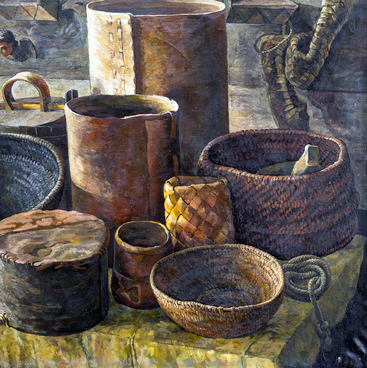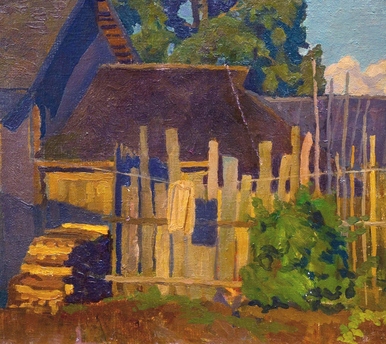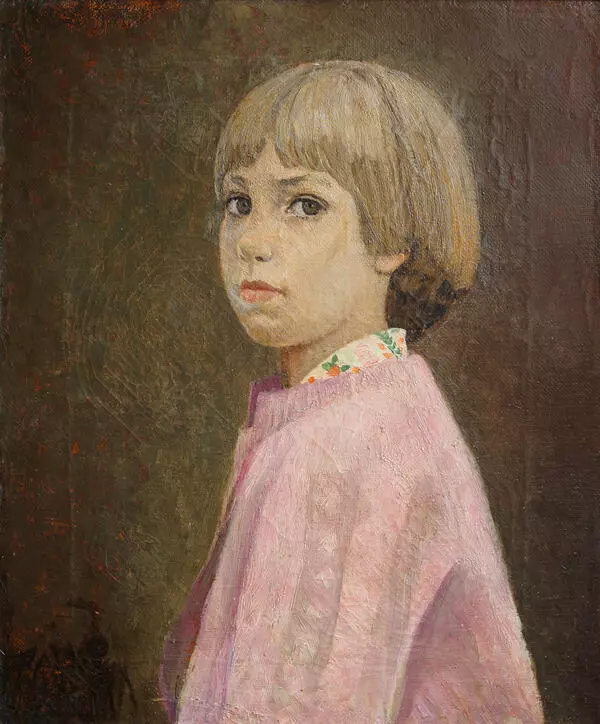Alexey Alexandrovich Zhabsky was born in 1933 in the village of Alexandrovskaya, Novosibirsk Oblast. In 1958, he graduated from the Sverdlovsk Art College, and in the mid-1960s — the Surikov Moscow State Art Institute, the workshop of Dmitry Konstantinovich Mochalsky.
Alexey Zhabsky was engaged in both easel painting and graphics. His artistic legacy includes a wide variety of genres. He painted landscapes, large-scale multi-figure compositions, portraits and still lifes.
From his student days, Alexey Alexandrovich Zhabsky came to Uglich every summer for 23 years. In this town, he created a series of portraits and cityscapes. It was in this town that he painted two series of portraits of old men and teenage girls, as well as the famous “Ryaba the Hen”.
The artist painted Uglich girls every summer from the mid-1970s to the early 1980s. He completed all the works in the same size and artistic manner — shoulder-length portraits on a neutral background. The artist did not set himself any tasks to identify the characteristic features of his models.
He was fascinated by the young beauty, which seemed to glow through the childish round faces and amorphous features. The portrait of Zhanna Smirnova is reminiscent of Florentine painting: the artist depicted a pale face and a proudly raised head.
Alexey Zhabsky “could work in different conditions: both in a quiet workshop and on the square. He even painted a large canvas on Red Square. And no one ever interfered with his work, ” wrote the artist’s widow, Lyudmila Mikhailovna Zhabskaya.
During his lifetime, he was called “a man not of this world.” He was unsociable, did not give public speeches, avoided video cameras and lenses, and was even skeptical about holding a personal exhibition. All this, according to Alexey Zhabsky, distracted him from his calling. The artist’s first solo exhibition was organized only a year after his death, in 2009. Later, his works were displayed in Moscow and Belgorod.
“God’s man”, a “bright” and “amazing” man, “a
tuning fork needed to tune us to the correct pitch”, and “a great metaphysician
of Russian life” — this is how his colleagues described Alexey Alexandrovich
Zhabsky. They considered him a great artist of the late 20th — early
21st century.




